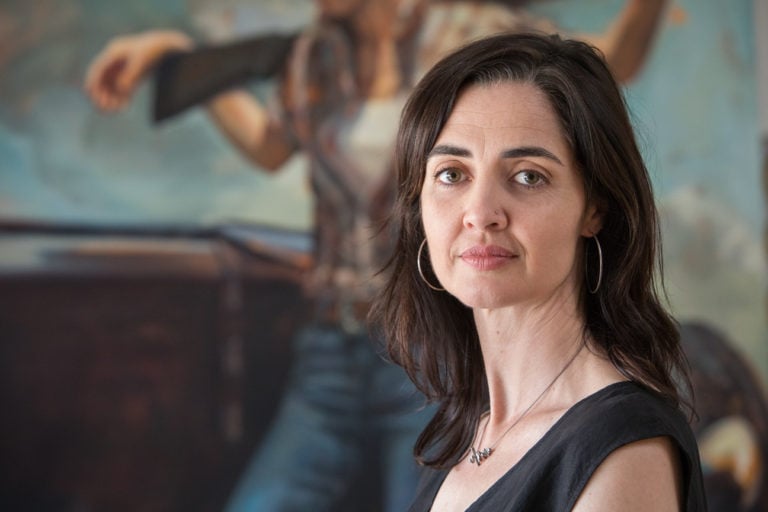Felice House is a figurative painter who strives, through her portraits of women, to provide a counterpoint to the passive female representations found in art historical tradition and culture at large. Her work endeavors to challenge stereotypes and empower her audience, women in particular, to change their preconceived notions of gender and power.
House has exhibited in museums and galleries across the country, as well as internationally. You can find her work in both public and private collections, including The Booth Museum of Western Art, Austin City Limits Music Festival, New Mexico State University, Prentice Women’s Hospital, and American Campus Communities. She has been featured in Fine Art Connoisseur Magazine, Vice Magazine’s The Creators Project, the BBC News, This is Colossal, Upworthy, GirltalkHQ, Hypertext, Refinery29, Boing Boing, Fubiz, El Diario (Spain) and Tabi Labo (Japan).
She received a BFA from the Nova Scotia College of Art and Design, an MS from Texas A&M University in computer graphics and an MFA in painting from the University of Texas. She studied classical painting and portraiture at the Schuler School of Fine Arts in Baltimore, MD. She is an Assistant Professor in the Visualization Department at Texas A&M University. She is a member of the Baha’i Faith.
“Tomorrow hopes we learned something from yesterday.”
– John Wayne
In Face West, House continues to project multi-racial, contemporary women into heroic roles formerly played by western movie icons such as Clint Eastwood, James Dean and John Wayne, with a focus on large-scale portraiture. In this body of work, House points to the racial and gendered nature of the hero in culture and begs the question, “What if Clint Eastwood were an Asian woman?”
“The Face West series of paintings and drawings views the mythical American West through a postmodern lens. Both a reflection and critique of Hollywood Westerns, the series explores the tension between heroic archetypes and gender. The series places contemporary women into heroic roles. By flipping the gender, and retaining the same visual signifiers, the series speaks to women’s access to power.” – Museum of the Southwest

